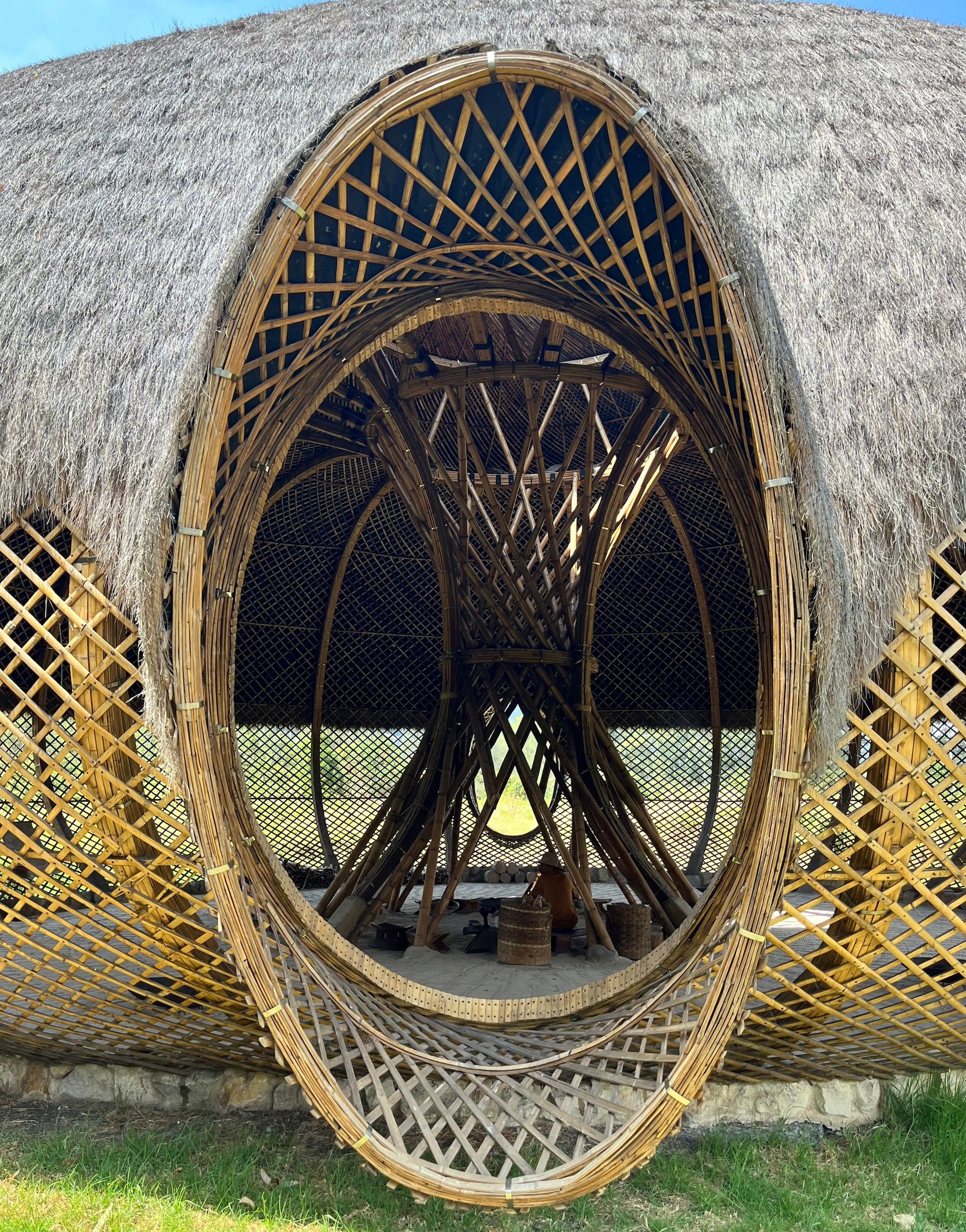Fundación Organizmo turns the very definition of what an architect does on its head. Working with the built environment, it is not an architecture firm but rather a “provoker of horizontal dialogue”, its founder, Ana María Gutiérrez, tells The Art Newspaper. Collaborating primarily with Indigenous communities, Gutiérrez believes her place is to “orchestrate”, not to teach. With an eye towards sustainability, the Colombia-based organisation hopes to help remove the stigma associated with using vernacular traditions and to deconstruct colonialism in the process—the experts here are people who intimately know the land, the plants and how to build with what is already there.
Fundación Organizmo’s first step when taking on a new project is facilitating dialogue with the community about what it needs—better cooking conditions, a place for gatherings, a building to facilitate storytelling, anything. Once the needs are clarified, local craftspeople, experts and leaders take the helm. Fundación Organizmo is there for ideas and support, and its focus is on empowering communities to work with their own traditional knowledge and vernacular architecture. Gutiérrez says that important considerations include “understanding life cycles of the materials they may use and taking guidance from the ecological calendar of the territory”.
Earthbag structure at the Centre of Fundación Organizmo Steven Kaminski
The site that Fundación Organizmo calls home, dubbed the Centre, is an hour outside Bogotá and a bit of an architectural fantasyland. It is a place where Gutiérrez and her team gather what they have learned from Indigenous communities and share that knowledge to others. At the Centre, community leaders congregate and discuss shared problems, and outsiders discover and learn about precolonial building techniques.
The Centre sits on farmland previously owned by Gutiérrez’s grandfather. Over the past 14 years, the farm has been replanted into a forest and meadowland with unique, fantastical structures dotting the landscape. There are small earthbag buildings that look like massive coil pots—Gutiérrez learned the technique from the Iranian American architectural pioneer Nader Khalili. Other structures are made with earthen bricks and thatched roofs. These are fully functional dwellings, complete with composting toilets, protection from the elements and beautiful frescoes inside. The Centre also has a self-built greywater system, a geodesic-domed office space and a sweeping bamboo structure with a sand floor and burning fire in the middle. Gutiérrez refers to it as a “house of thought”, where visitors can cathartically scatter tobacco leaves into the fire.

Window view into the House of Thought at the Centre of Fundación Organizmo Steven Kaminski
In addition to the edifices dotting the landscape, Fundación Organizmo is reintroducing native plant species in a bid to improve the ecological systems of the site. This process is an example of what Gutiérrez describes as “listening to different eloquences”, not solely human and architectural imperatives. It is also an example of how holistically Gutiérrez and her team treat the concept of regeneration.
Gutiérrez seems unconvinced that there could be commercial applications for what she has been learning and disseminating at Fundación Organizmo. She is, however, a classically trained architect who once practiced in New York City, so perhaps there is still hope for a sustainable-architecture revolution.




















